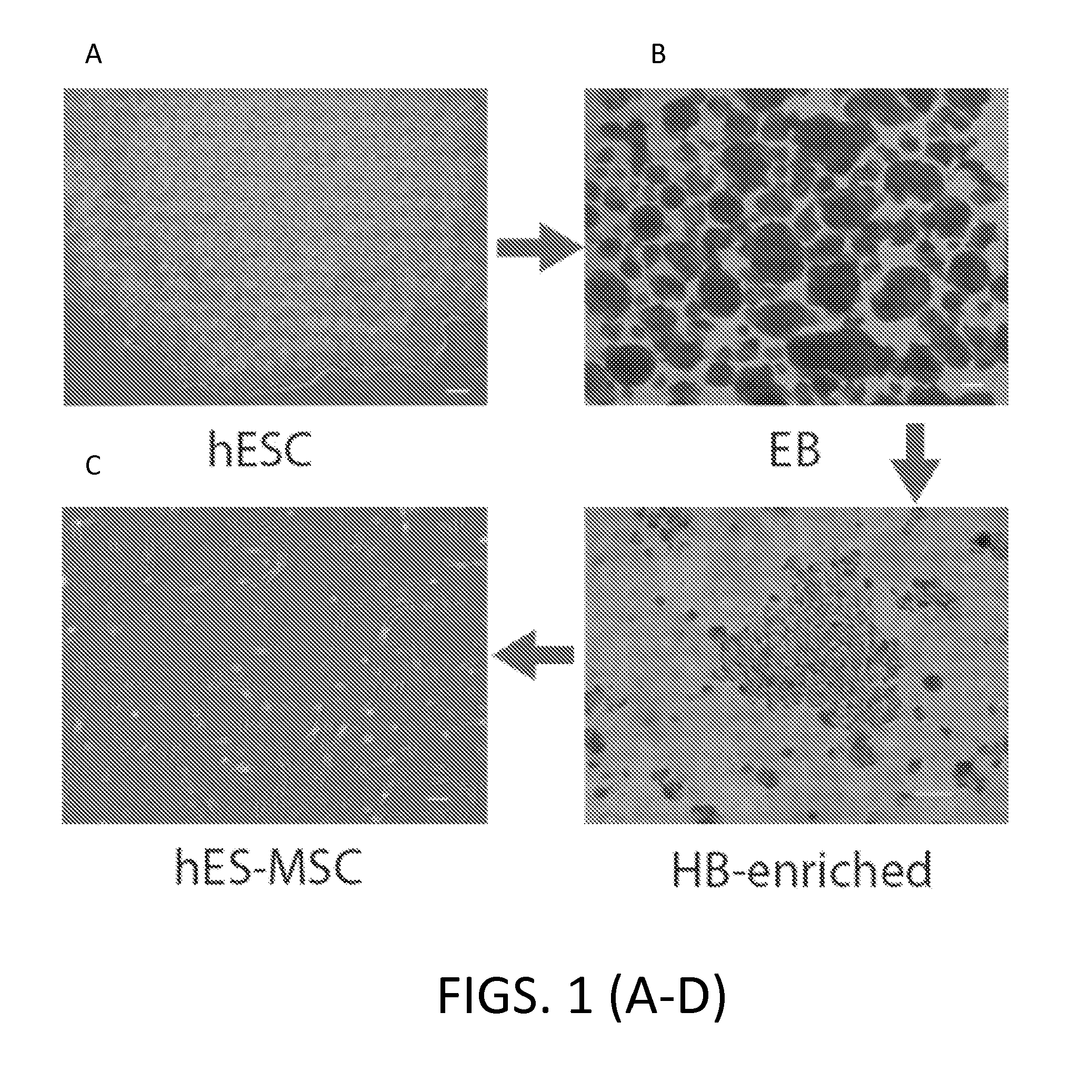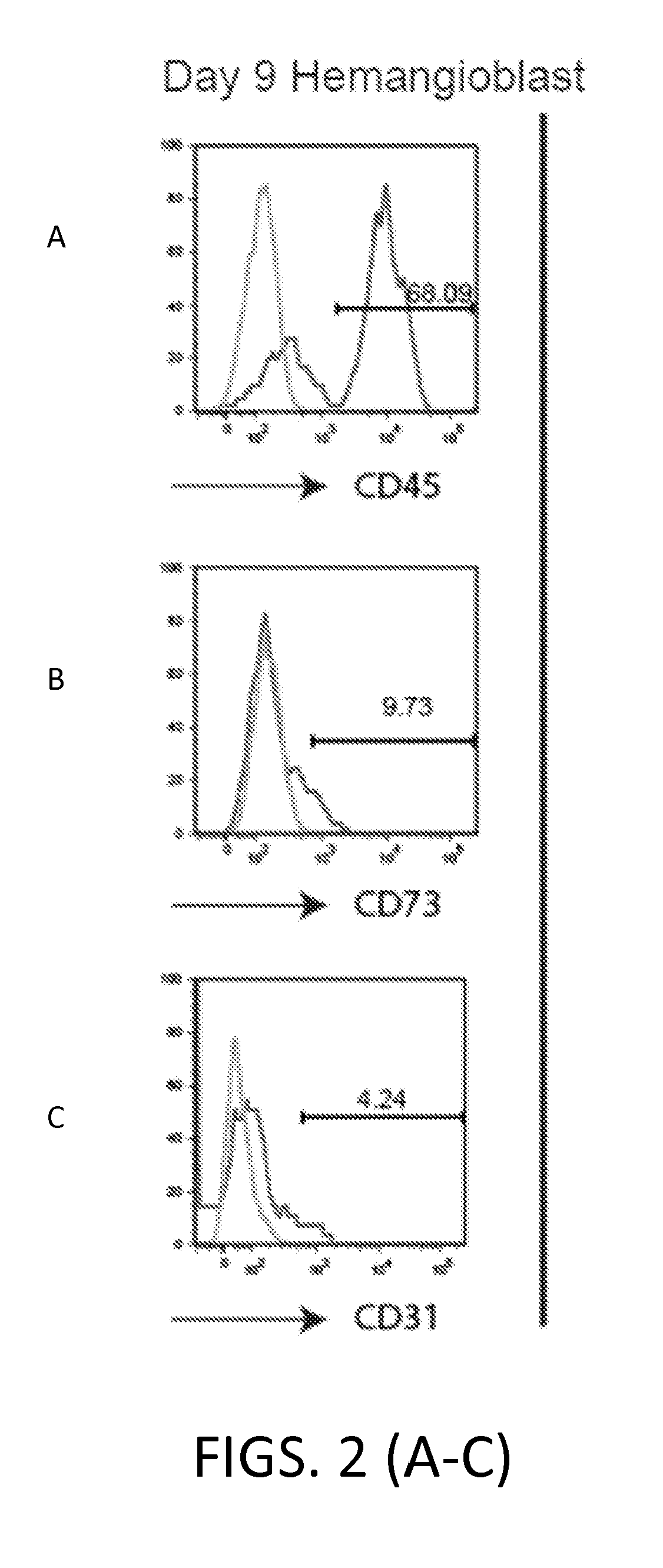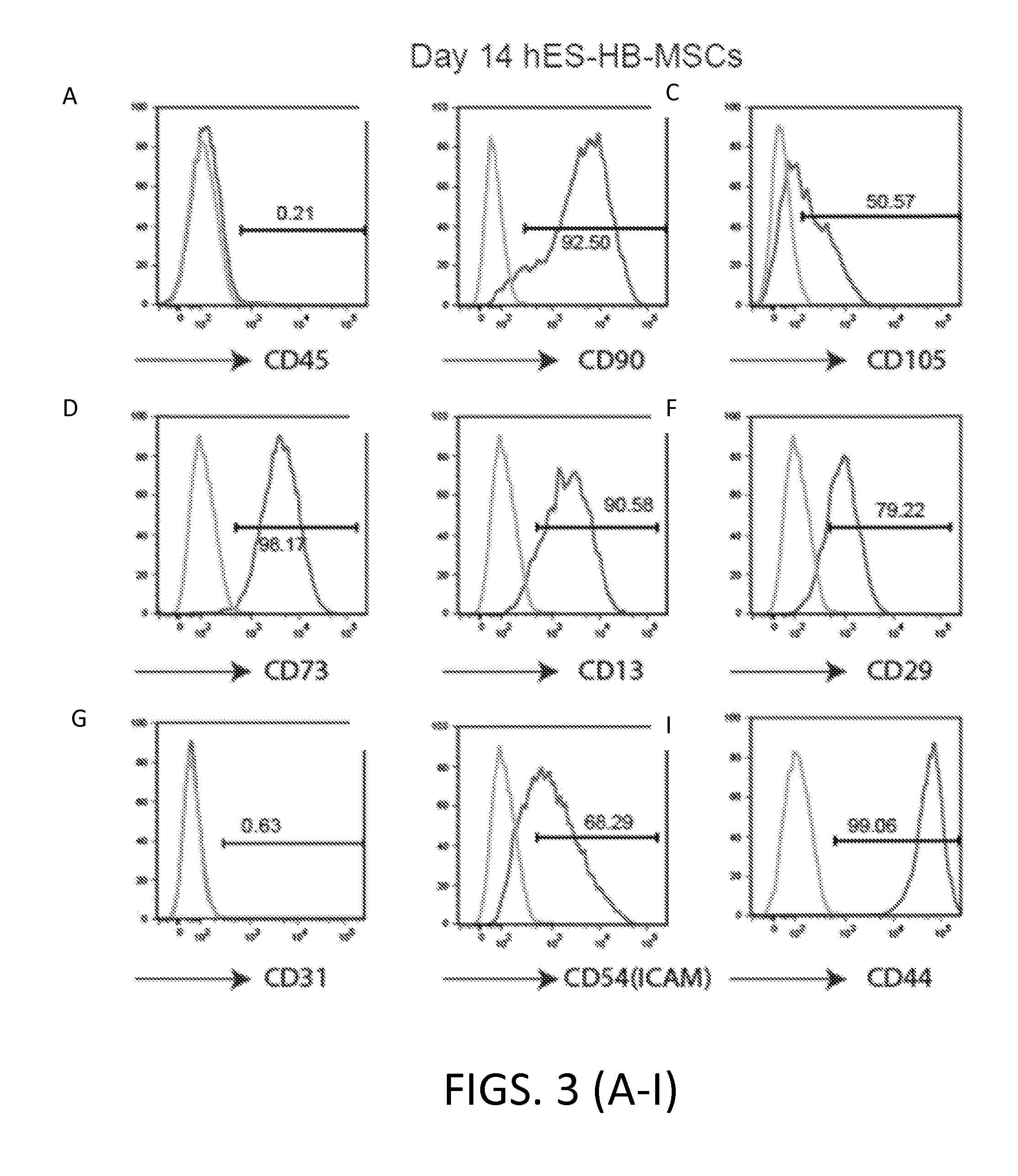Mesenchymal-like stem cells derived from human embryonic stem cells, methods and uses thereof
a technology of embryonic stem cells and stem cells, applied in the field of mesenchymallike stem cells derived from human embryonic stem cells, can solve the problems of avoiding translation of animal findings to patients, reducing the clinical effect of eae mice, so as to achieve the effect of reducing the disease score of eae mice, reducing the risk of heart attack and stroke, and inhibiting the proliferation of t cells
- Summary
- Abstract
- Description
- Claims
- Application Information
AI Technical Summary
Benefits of technology
Problems solved by technology
Method used
Image
Examples
example 1
6.1 Example 1
Derivation of hES-HB-MSCs
[0314]Using a method to derive HB from hESC via EB, mesodermal cells (MP) were enriched and further differentiated into either HB or MSC depending on subsequent culture conditions.
Material and Methods
[0315]Four hESC cell lines were used: H9 (derived from WiCell Research Institute) (Thomson et al. (1998)); CT2 (derived from University of Connecticut Stem Cell Core (Lin et al. (2010)); MA09 (an FDA approved, clinical-grade cell line derived at Advanced Cell Technology, Inc.) (Klimanskaya et al. (2006)); and ES03-Envy (Envy, a GFP-labeled line, derived at ES International) (Costa et al. (2005)). These cell lines were cultured on Matrigel (BD Biosciences, San Jose, Calif.) and cultured in TeSR1 medium, (Stem Cell Technologies, Vancouver, Canada), with or without adding of 0.05-0.2 μM of BIO (6-Bromoindirubin-3′-oxime (CAS 667463-62-9)).
[0316]hESC cells were then differentiated into EB cells and then enriched for HB as previously described (Lu et al....
example 2
6.2 Example 2
Further Characterization of hES-HB-MSC Cells
[0326]The MSC cells obtained in Example 1 were further analyzed using flow cytometry, immunofluorescence staining, multi-lineage differentiation, and karyotyping.
Materials and Methods
[0327]Flow cytometry was performed as described in Example 1.
[0328]Immunofluorescence was performed by fixing cells with 4% paraformaldehyde for 15 minutes, and incubating in PBS containing 0.2% Triton X-100 (for permeabilization) and 5% goat serum (for blocking). PBS containing 5% goat serum was used to dilute the primary antibodies. The cells were incubated with the primary antibodies at 4° C. overnight, followed by washing with PBS for three times. Afterwards, the cells were incubated with fluorochrome-conjugated, corresponding secondary antibodies at room temperature for 30 minutes and washed with PBS for three times. Finally, the cells were examined under fluorescence microscope to capture both phase and fluorescent images.
[0329]The G-banded ...
example 3
6.3 Example 3
hES-MSCs Attenuate the Disease Score of EAE Mice in Both Prophylactic and Therapeutic Modes
[0334]Because it has been shown that BM-MSCs can attenuate the disease progression of the mouse model of multiple sclerosis, experimental autoimmune encephalomyelitis (EAE), the hES-MSCs obtained in Example 1 were injected into mice with EAE to determine if they would have the same effect.
Materials and Methods
[0335]The mouse EAE model was induced as previously described (Stromnes and Goverman (2006)). C57BL / 6 mice were subcutaneously injected with a mixture of myelin oligodendrocyte glycoprotein peptide 35-55 (MOG88-88), Freund's adjuvant, and pertussis toxin contained in the EAE Induction Kit (Hooke Laboratories, Inc, Mass. (Cat. #EK-0114)) following the manufacturer's protocol and as described in Ge et al. (2012).
[0336]BM- or hES-MSC at 106 cells / mouse or PBS (a vehicle control) was intraperitoneal (i.p.) injected on day 6 (for pre-onset) or 18 (for post-onset) after the immuniz...
PUM
| Property | Measurement | Unit |
|---|---|---|
| volume | aaaaa | aaaaa |
| volume | aaaaa | aaaaa |
| volume | aaaaa | aaaaa |
Abstract
Description
Claims
Application Information
 Login to View More
Login to View More - R&D
- Intellectual Property
- Life Sciences
- Materials
- Tech Scout
- Unparalleled Data Quality
- Higher Quality Content
- 60% Fewer Hallucinations
Browse by: Latest US Patents, China's latest patents, Technical Efficacy Thesaurus, Application Domain, Technology Topic, Popular Technical Reports.
© 2025 PatSnap. All rights reserved.Legal|Privacy policy|Modern Slavery Act Transparency Statement|Sitemap|About US| Contact US: help@patsnap.com



